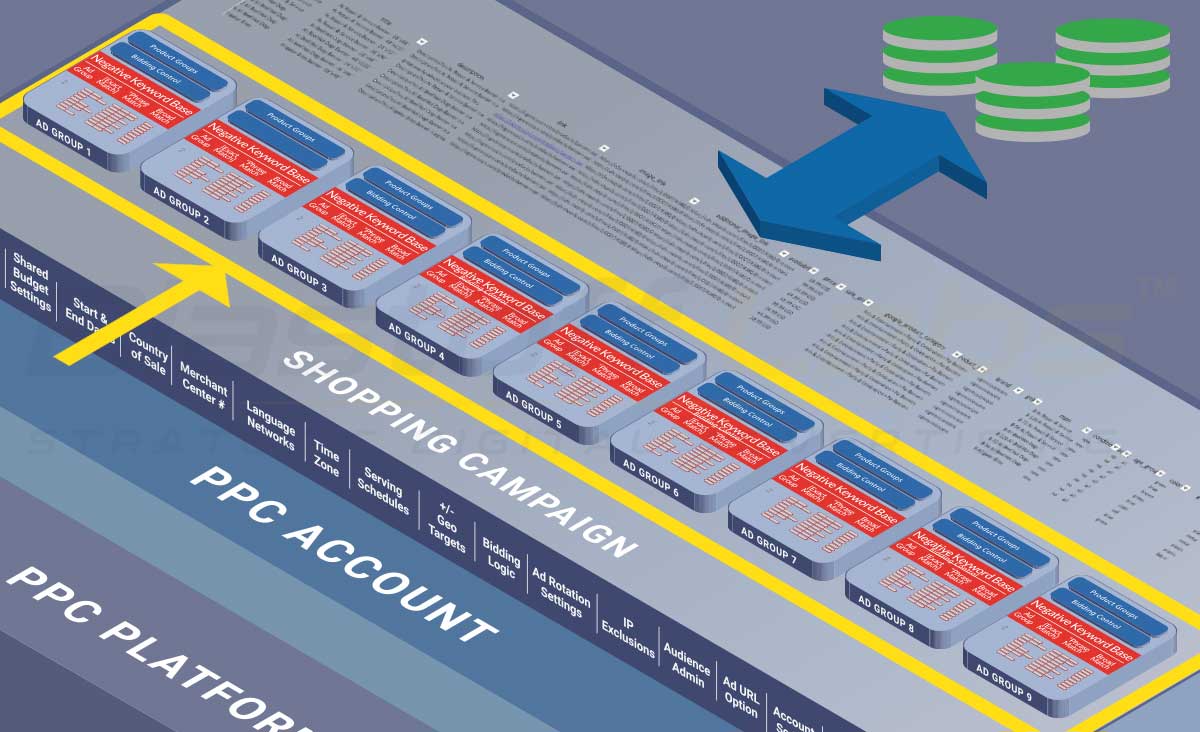
Individual shopping campaigns are structured internally on two levels.
Product Groups: Provide a mechanism to group together similar products within the feed. You can create product groups using various attributes present in the feed. Typically this is used to bid similar products and product variants at the Product Group level.
Each product group is a subset of the feed. The bids are then controlled at the product group level. This can save a great deal of time while managing campaigns with sizeable feeds.
Ad Groups: In Shopping campaigns, Ad Groups are a powerful tool to control the matching of search queries to product SKU’s. That’s because negative keywords can be assigned to ad groups. This allows slightly “off-match” keywords to be rejected as matches in all but the correct ad group.
Product Types
Product Types provide a 5-level taxonomy for categorizing products within a SKU, independent of product group and ad group parameters. This is often useful for feed optimization, bidding, and reporting purposes.
Only the top-level product type field is indexed by the shopping platform.
Structuring At The Shopping Campaign Level
There are many approaches possible when segmenting an eCommerce feed into Shopping campaigns.
We begin by examining the feed and the relationship between the products. We determine which products should serve in individual campaigns versus separate.
Individual products are then assigned into product groups based upon product characteristics and pricing.
We then segregate the product groups using ad groups, in order to take advantage of negative keywords making the campaign more selective. With negative keywords customized down to the ad group level, search queries will more accurately match individual SKUs within the feed.






